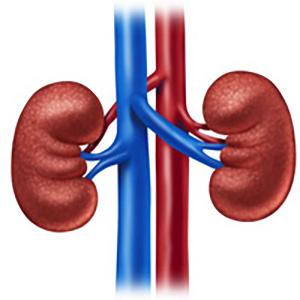The outcomes of flexible ureteroscopy for renal calculi of 2 cm or more with and without the use of ureteral access sheath: A retrospective study

Accepted: July 14, 2023
All claims expressed in this article are solely those of the authors and do not necessarily represent those of their affiliated organizations, or those of the publisher, the editors and the reviewers. Any product that may be evaluated in this article or claim that may be made by its manufacturer is not guaranteed or endorsed by the publisher.
Introduction: The rate of success of retrograde intrarenal surgery (RIRS) for treating urinary tract stones is high, and the procedure is growing in popularity. The routine use of ureteral access sheath (UAS) remains somewhat controversial. The aim of this study was to assess the efficacy and safety of employing UAS during flexible ureteroscopy for treating renal stones ≥ 2 cm. Methods: This retrospective study was accomplished from January 2021 to February 2023. From 495 consecutives flexible ureteroscopies, 112 patients had renal stones ≥ 2 cm (60 patients with the use of UAS and 52 patients without). The stone-free status was verified after 8 weeks of operation. Results: The average diameter of the renal stones in non-UAS or UAS treated groups was 22.5 mm and 22.6, respectively. None of the groups differed significantly in terms of stone side, stone size, stone position, or Hounsfield unite but there was significant difference (p < 0.001) among two groups as regard pre-operative stenting (cases with UAS had 23.3% pre-operative stenting). Conclusions: It is not always necessary to use UAS in conjunction with flexible ureteroscopy and laser lithotripsy to treat renal calculi bigger than or equal two cm. Without the assistance of UAS, the surgery may be carried out successfully and safely.
Kılıç Ö, Akand M, Van Cleynenbreugel B. Retrograde intrarenal surgery for renal stones - Part 2. Turk J Urol. 2017; 43:252-260. DOI: https://doi.org/10.5152/tud.2017.22697
Heers H, Turney BW. Trends in urological stone disease: a 5-year update of hospital episode statistics. BJU International. 2016; 118:785-789. DOI: https://doi.org/10.1111/bju.13520
Takayasu H, Aso Y. Recent development for pyeloureteroscopy: guide tube method for its introduction into the ureter. J Urol. 1974; 112:176-178. DOI: https://doi.org/10.1016/S0022-5347(17)59675-5
Newman RC, Hunter PT, Hawkins IF, Finlayson B. The ureteral access system: a review of the immediate results in 43 cases. J Urol. 1987; 137:380-383. DOI: https://doi.org/10.1016/S0022-5347(17)44039-0
Monga M, Bhayani S, Landman J, et al. Ureteral access for upper urinary tract disease: the access sheath. J Endourol. 2001; 15:831-834. DOI: https://doi.org/10.1089/089277901753205843
Elsaqa M, Hyder Z, Thai K, et al. Comparison of commonly utilized ureteral access sheaths: A prospective randomized trial. Arch Ital Urol Androl. 2023; 95:11149. DOI: https://doi.org/10.4081/aiua.2023.11149
Vanlangendonck R, Landman J. Ureteral access strategies: proaccess sheath. Urol Clin North Am. 2004; 31:71-81. DOI: https://doi.org/10.1016/S0094-0143(03)00095-8
Abrahams HM, Stoller ML. The argument against the routine use of ureteral access sheaths. Urol Clin North Am. 2004; 31:83-87. DOI: https://doi.org/10.1016/S0094-0143(03)00085-5
Auge BK, Pietrow PK, Lallas CD, et al. Ureteral access sheath provides protection against elevated renal pressures during routine flexible ureteroscopic stone manipulation. J Endourol. 2004; 18:33-36. DOI: https://doi.org/10.1089/089277904322836631
Loftus CJ, Ganesan V, Traxer O, et al. Ureteral Wall Injury with Ureteral Access Sheaths: A Randomized Prospective Trial. J Endourol. 2020; 34:932-936. DOI: https://doi.org/10.1089/end.2018.0603
Lallas CD, Auge BK, Raj GV, et al. Laser Doppler flowmetric determination of ureteral blood flow after ureteral access sheath placement. J Endourol. 2002; 16:583-590. DOI: https://doi.org/10.1089/089277902320913288
Traxer O, Thomas A. Prospective evaluation and classification of ureteral wall injuries resulting from insertion of a ureteral access sheath during retrograde intrarenal surgery. J Urol. 2013; 189:580-584. DOI: https://doi.org/10.1016/j.juro.2012.08.197
Tiselius HG, Ackermann D, Alken P, et al. Guidelines on urolithiasis. Eur Urol. 2001; 40:362-371. DOI: https://doi.org/10.1159/000049803
Ben Saddik MA, Al-Qahtani Sejiny S, Ndoye M, et al. Flexible ureteroscopy in the treatment of kidney stone between 2 and 3 cm. Progr Urol. 2011; 21:327-332. DOI: https://doi.org/10.1016/j.purol.2010.07.012
Aboumarzouk OM, Monga M, Kata SG, et al. Flexible ureteroscopy and laser lithotripsy for stones >2 cm: a systematic review and meta-analysis. J Endourol. 2012; 26:1257-1263. DOI: https://doi.org/10.1089/end.2012.0217
De Coninck V, Somani B, Sener ET, et al. Ureteral Access Sheaths and Its Use in the Future: A Comprehensive Update Based on a Literature Review. J Clin Med. 2022; 11:5128. DOI: https://doi.org/10.3390/jcm11175128
Scotland KB, Rudnick B, Healy KA, et al. Retrograde Ureteroscopic Management of Large Renal Calculi: A Single Institutional Experience and Concise Literature Review. J Endourol. 2018; 32:603-607. DOI: https://doi.org/10.1089/end.2018.0069
Meier K, Hiller S, Dauw C, et al. Understanding Ureteral Access Sheath Use Within a Statewide Collaborative and Its Effect on Surgical and Clinical Outcomes. J Endourol. 2021; 35:1340-1347. DOI: https://doi.org/10.1089/end.2020.1077
Grasso M, Conlin M, Bagley D. Retrograde ureteropyeloscopic treatment of 2 cm. or greater upper urinary tract and minor Staghorn calculi. J Urol. 1998; 160:346-351. DOI: https://doi.org/10.1016/S0022-5347(01)62892-1
El-Anany FG, Hammouda HM, Maghraby HA, Elakkad MA. Retrograde ureteropyeloscopic holmium laser lithotripsy for large renal calculi. BJU International. 2001; 88:850-853. DOI: https://doi.org/10.1046/j.1464-4096.2001.01248.x
Palmero JL, Castelló A, Miralles J, et al. Results of retrograde intrarenal surgery in the treatment of renal stones greater than 2 cm. Actas Urol Esp. 2014; 38:257-262. DOI: https://doi.org/10.1016/j.acuroe.2014.02.004
Al-Qahtani SM, Gil-Deiz-de-Medina S, Traxer O. Predictors of clinical outcomes of flexible ureterorenoscopy with holmium laser for renal stone greater than 2 cm. Adv Urol. 2012; 2012:543537. DOI: https://doi.org/10.1155/2012/543537
Huang JS, Xie J, Huang XJ, Yuan Q, et al. Flexible ureteroscopy and laser lithotripsy for renal stones 2 cm or greater: A single institutional experience. Medicine. 2020; 99:e22704. DOI: https://doi.org/10.1097/MD.0000000000022704
Copyright (c) 2023 the Author(s)

This work is licensed under a Creative Commons Attribution-NonCommercial 4.0 International License.
PAGEPress has chosen to apply the Creative Commons Attribution NonCommercial 4.0 International License (CC BY-NC 4.0) to all manuscripts to be published.


 https://doi.org/10.4081/aiua.2023.11524
https://doi.org/10.4081/aiua.2023.11524



